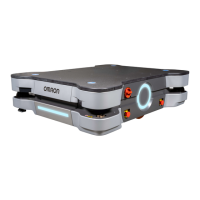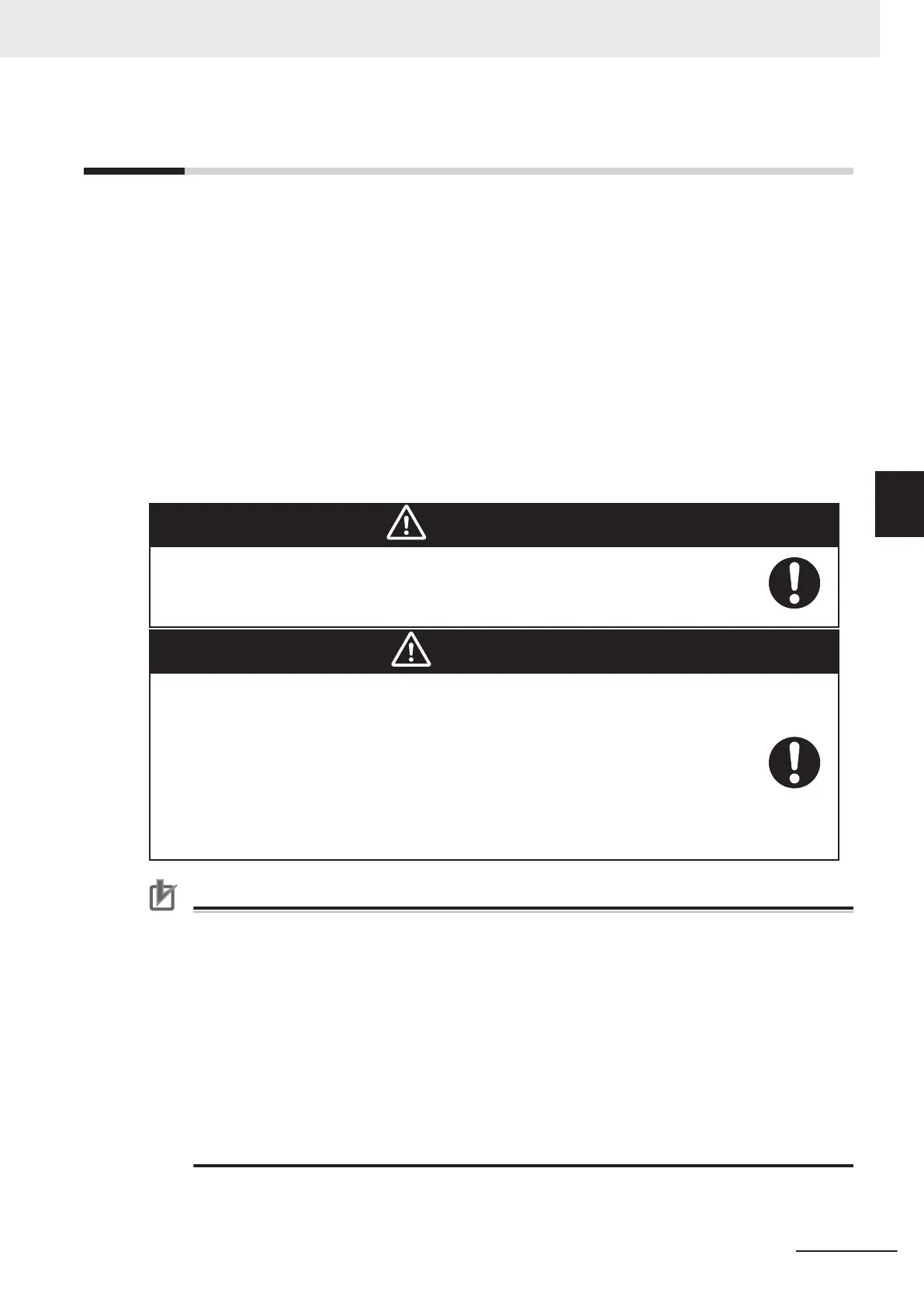4-17
Manually Pushing the AMR
If the AMR becomes immobilized, it may need to be manually pushed to a new location.
Payloads and other user-supplied equipment can affect an AMR's stability. All operators should know
the locations on the AMR (or its payload) where they can push safely without toppling the AMR over or
damaging its components. Push points should be as low as possible and near the center of gravity.
Make the following considerations when manually pushing the AMR.
• Do not push the AMR by pressing on the skins.
• There is no appropriate point at which to pull the AMR. Only push the AMR when attempting to man-
ually move it.
• Do not push the AMR with another motorized device.
• Only push from the top of the AMR or the bar near the mechanical brake release.
• Use at least 2 people to manually push the AMR. One person is required to operate the brake re-
lease during the pushing process. Refer to 4-16 Releasing the Brakes on page 4-33 for more infor-
mation.
WARNING
Use caution when stopping the AMR on a ramp. The use of the brake release will
cause direct rolling of AMR down the ramp. Powering OFF the AMR on a ramp should
be avoided if possible to minimize the use of brake release on a ramp.
CAUTION
• Pushing an AMR requires significant effort and might cause personal injury or prop-
erty damage. Take appropriate care and follow all safety instructions.
• The pushing points of the AMR are low to the ground. You must use safe pushing
practices when manually moving the AMR.
• When manually moving the AMR, do not push it from a high position on its payload
or payload structure. This might cause the AMR to topple.
• Manually moving the AMR while the brakes are released is not recommended. If
you must manually move the AMR, make sure to do this safely as this could result
in personal injury or property damage.
Precautions for Correct Use
• You should move the AMR manually only when absolutely necessary during an emergency,
for safety, or if it is lost or stuck. If you find that you must frequently move the AMR, use Mobi-
lePlanner to reconfigure its route to avoid problematic areas.
• Avoid moving the AMR while it is powered OFF. If you manually move the AMR while it is
powered OFF, it may not be able to determine its current location when it is powered ON
again. Use the localization feature in MobilePlanner to localize the AMR if this occurs.
• If the loaded AMR is too heavy to move manually, it is recommended that you seek additional
help or remove the payload.
• Only qualified personnel who have read and understood this manual and the Autonomous
Mobile Robot (AMR) MD-series Platform Safety and Unpacking Guide (Cat. No. I682) should
manually move the AMR.
• OMRON recommends that you train personnel on the safe use of the brake release opera-
tions and procedures for safely pushing an AMR.
4 Operation
4-35
AMR (Autonomous Mobile Robot) MD-series Platform User's Manual (I681)
4-17 Manually Pushing the AMR
4

